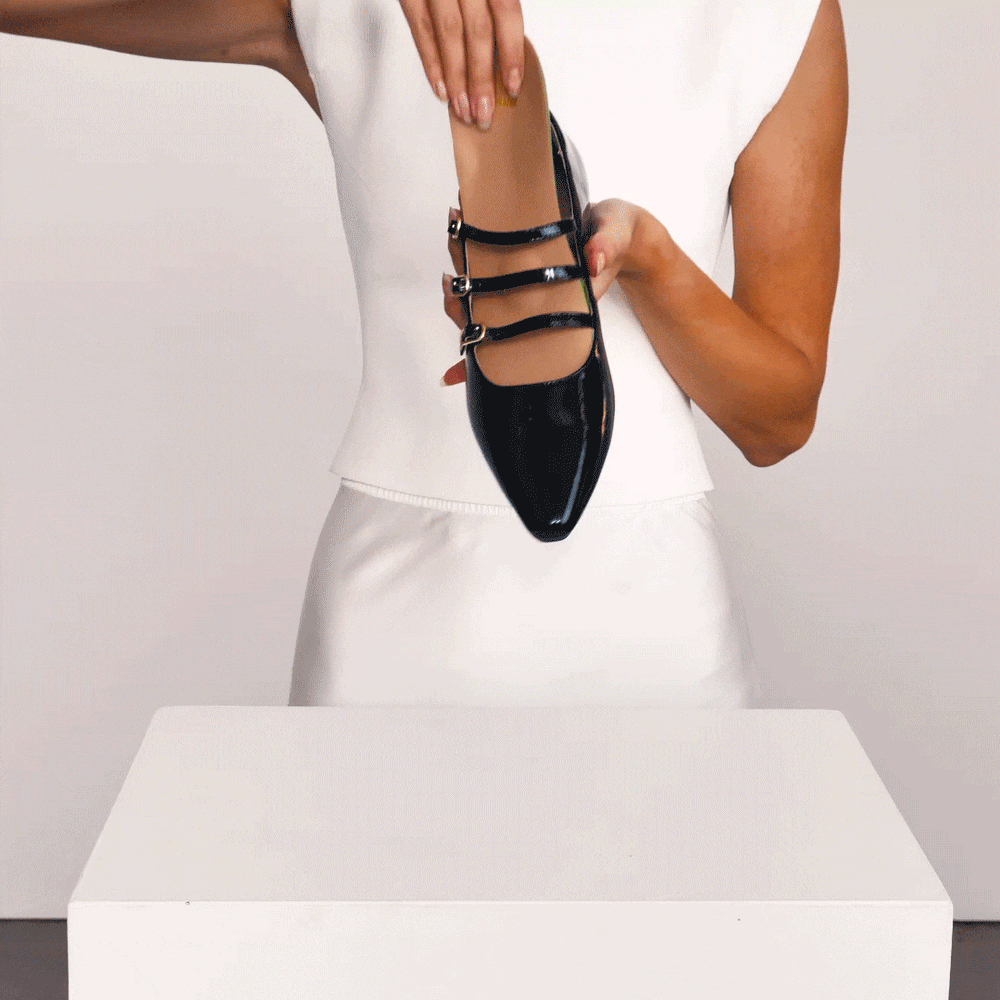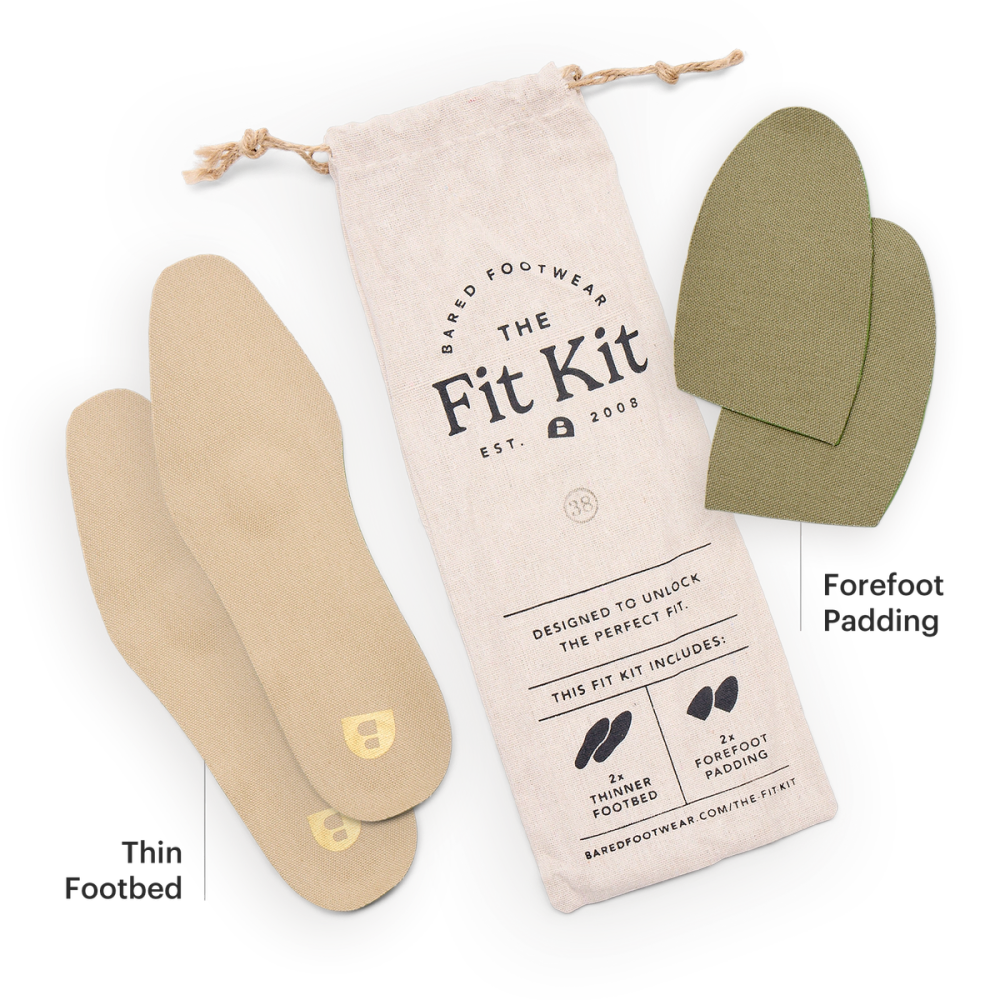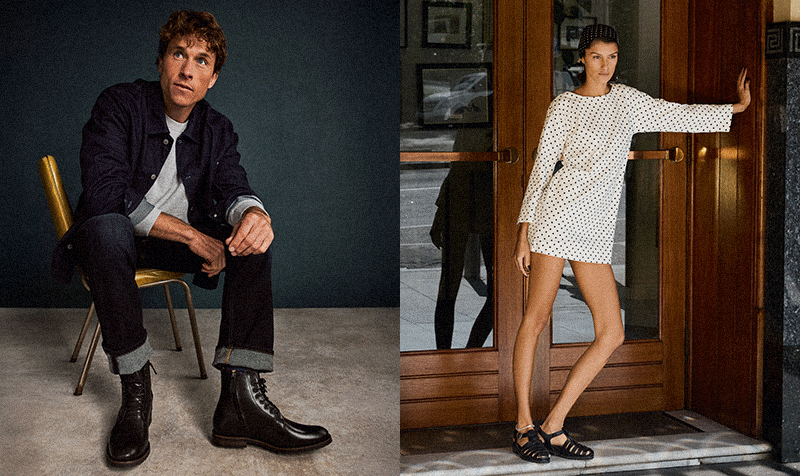FIND YOUR PERFECT PAIR
Orthotic Friendly Shoes
You have orthotics, the tricky part is finding shoes that fit them, right? Wrong. Our shoes are crafted with your orthotics in mind, and designed to be crazy comfy, too.
All Bared shoes are built with extra depth to accommodate either our unique biomechanical footbed or your orthotic.
Filter by 'Orthotic Friendly' to see all our styles that will accomodate your orthotics - they come with forefoot padding to help you customise your fit, too! If you're ordering online, let us know your foot shape and orthotic length in the fitting notes section and we'll send forefoot pads along with your shoes to find your perfect fit.


Half & Three-quarter Orthotics
Remove the original footbed, and replace it with your half or three-quarter orthotic. By doing this, you will be removing the cushioning in the forefoot and may find your shoes quite spacious. Add the provided forefoot padding to make up this extra space for a snugger fit.
Full-length Orthotics
Remove the original footbed, and replace it with your full-length orthotic. Depending on the width of your foot, you may or may not require additional padding to ensure a secure fit.
Here are some key features to look for in shoes for orthotics:

Extra Depth
Required to accommodate both your orthotic and your foot! Many casual shoes are manufactured with their insoles glued in or don’t have a removable insole; if you can’t remove it, it's unlikely the shoe will be able to accommodate both your foot and orthotics. Opt for shoes with removable insoles and a deep heel cup, allowing you to use your orthotics without compromising on fit. Most of our fully-enclosed styles have a removable footbed. Check on the product description to find out.

Steel Shank
A shank that runs from under the heel and stops just before the ball of the foot will give a shoe good torsional stability (meaning the shoe doesn’t twist and only flexes at the forefoot). It provides a stable base for your orthotics to do their job and increases the longevity of your shoes. All of our shoes, excluding our Sanderlings and At Home ranges, have a built in steel shank.

Firm Heel Counter
A heel counter is essential to keep your foot on top of your orthotic device. A firm heel counter is preferred as it will assist to control the rearfoot, help to support your fat pad and prevent your foot from slipping around on top of the orthotics. All of our fully-enclosed styles have a firm heel counter which will mould to your foot with wear.

Cushioned Midsole
Provides shock absorption and increases both comfort and longevity. We’ve hidden an extra layer of cushioning within our midsoles for optimum comfort.

Good Fixation
Fixation refers to laces, buckles and straps. The aim is for the shoe to hold onto the foot, not the other way around! If you’re looking at boots, opt for a style with laces or ensure that the fit around the top of the foot and ankle is snug. Although it can be done, it’s not ideal to wear your orthotics in a loafer.
Customise Your Fit
The Fit Kit
Whether you would describe your feet as perfectly normal or super wide or skinny we should be able to get the right fit for your foot. If you have orthotics, remove our footbed and replace it with your orthotic. If it feels too large, try placing a forefoot pad in the front of the shoe, then placing your orthotic on top.
Each Fit Kit includes:
2 x Thin Footbeds
2 x Forefoot Padding
Talk to an expert or learn more about The Fit Kit.


A Podiatrist's Guide to Shoes for Orthotics.
Orthotics are external devices, often referred to as ‘arch supports’ that are prescribed to enhance lower limb function and/or assist in the management of foot, leg, hip or back pain. They can help to reduce load in certain structures (bones, ligaments, muscles) and redistribute pressure. For some, wearing an orthotic may be a short term intervention, whilst for other chronic conditions it may be an ongoing requirement.
Orthotics can be manufactured out of different materials. Majority are made from 3D printed nylon or a polypropylene (plastic), but can also be manufactured from EVA (foam), carbon fibre or cork.
To enhance the function of your orthotics, shoes need to act as a stable, secure vessel to house them. If we were to put an orthotic in a super soft, flimsy shoe, it’s likely that the foot will not be held on top of the device, resulting in slipping on the orthotic and not allowing it to function properly.
A few extra tips...
Ensure you're placing your orthotic onto a flat base.
Your orthotic shouldn’t sit on top of another orthotic or footbed with a heel cup or arch support; this will change the angle of your device and how it controls your foot.
Every orthotic is different.
While we try to accommodate most foot and orthotic types, a thick or chunky orthotic device, along with a wider or voluminous foot type, may not work in all styles. We recommend visiting us in store with your orthotics or jumping on LiveChat to chat to us about shoe options.
We'll never leave you in shoes you don't love
Whether you're deciding between styles or need some guidance on fit, our Customer Service team is available seven days a week. Book a virtual fitting, give us a call, or chat with us live – we’re happy to help!
Related Articles
Wide Feet | Narrow Feet | Shoes For Foot Pain | Morton's Neuroma & Shoes | Plantar Fasciitis & Footwear | Bunions & Shoes


































